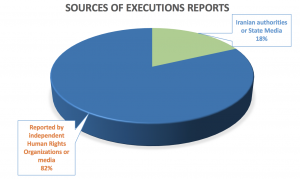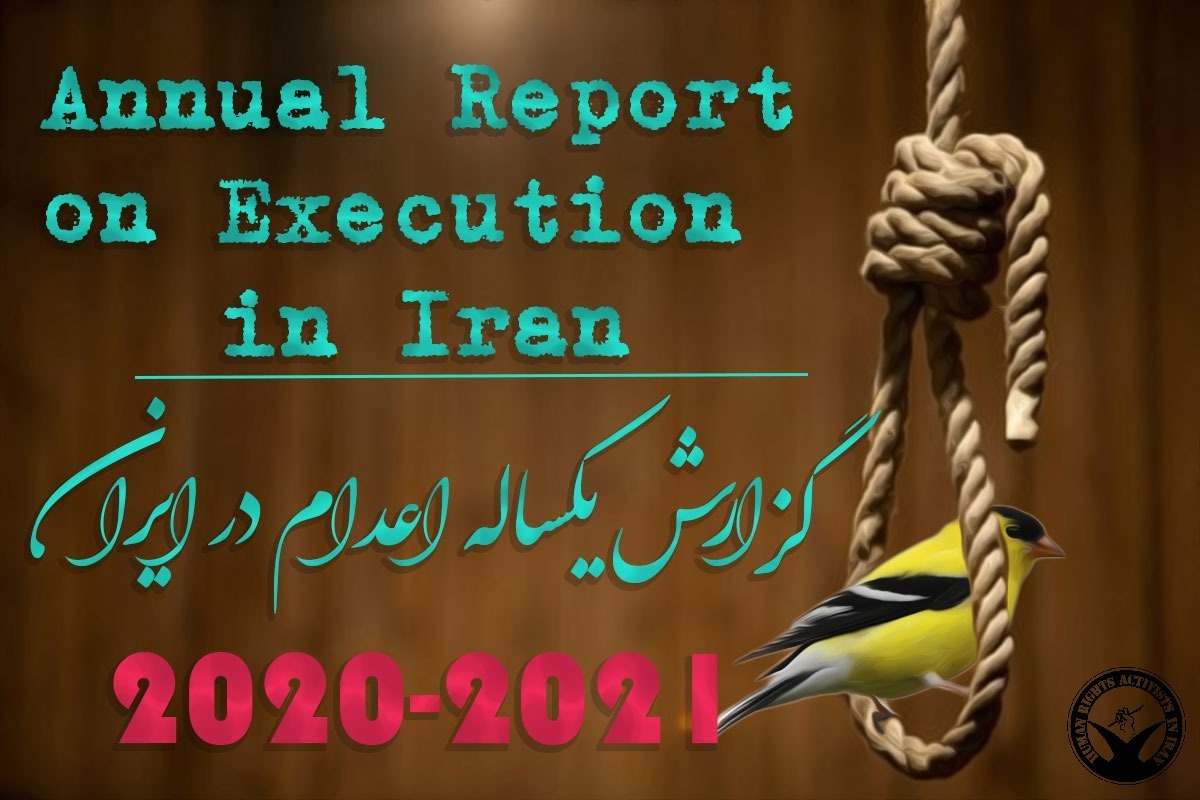On the World Day Against the Death Penalty, the Center of Statistics of Human Rights Activists in Iran (HRAI) has published its annual report , in efforts to sensitize the public about the situation of the death penalty in Iran.
HRANA’s Statistics Center relies on the work of HRANA reporters, as well as a network of independent and verifiable sources. It also incorporates disclosures to the media by judicial authorities announcing or confirming prisoner executions, and as such is exposed to a margin of error representing efforts by the Iranian authorities to omit, conceal, or restrict the collection of such data.
Between October 8, 2020, and October 9, 2021, executions and the death penalty have been the focus of 253 HRANA reports. Over this time period, the Iranian authorities issued the death penalty sentence to 90 individuals and have already carried out 266 executions.

Women account for only 9 of the 266 HRANA-confirmed execution victims this year. In addition, 3 juvenile offenders, under the age of 18 when they allegedly committed the crime they were charged with, were executed.

The report includes a breakdown of executions by capital offense: 55.8% were charged with murder, 33.5% were charged with drug and narcotic offenses, 3.4% were charged with Rape, 4.8% were charged with armed robbery/offenses classified as “corruption on earth”, 1.5% were charged with political or security-related offenses, and 0.74% had unknown charges.

The chart below displays execution numbers by the province in which they took place. According to this chart, Khorasan Razavi had the highest number of executions at 17.7%. Alborz and Sistan and Baluchestan came in second and third, with 13.2% and 9.4% respectively.

The chart below depicts the distribution of executions’ information sources. The chart indicates that 82% of HRANA-confirmed executions were not announced by the official Iranian sources. Undisclosed executions are referred to as “secret” executions.

***
Click here to download the report in PDF format.
For further inquiries please contact Skylar Thompson, Senior Advocacy Coordinator Human Rights Activists in Iran (HRA) at skylar@hramail.com















